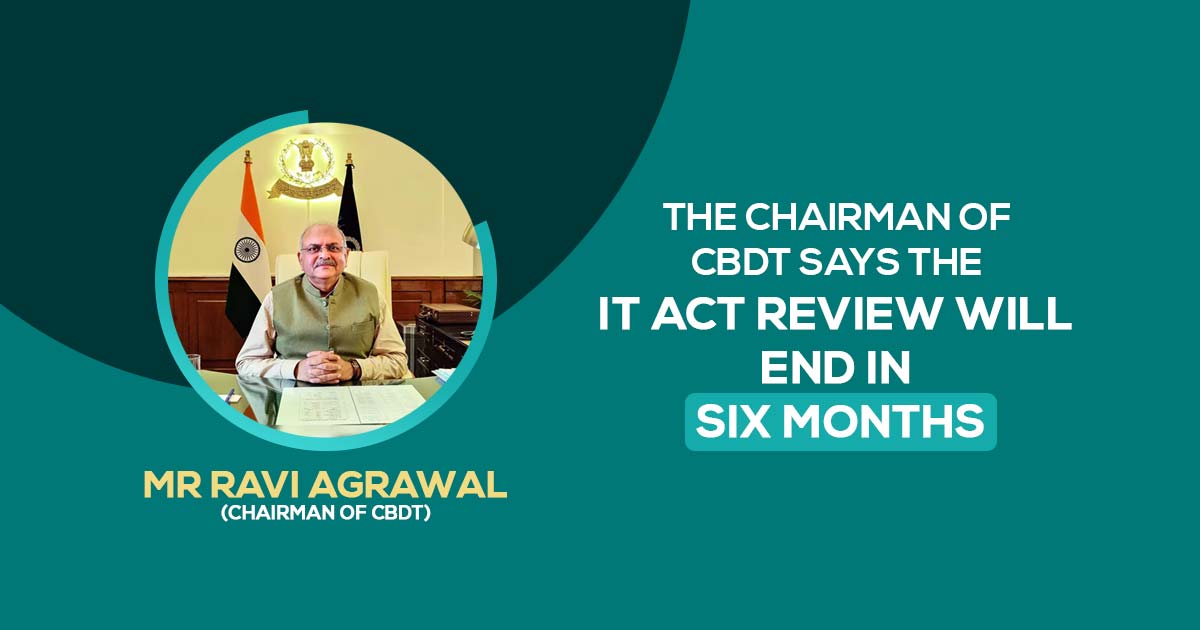
Within the specified six-month timeframe, the review of the Income Tax Act of 1961 is set to be completed CBDT Chairman Ravi Agrawal cited.
In the Budget speech last month, Union Finance Minister Nirmala Sitharaman announced that the direct tax law of the country would be examined to make it easy, and the job would be completed in 6 months.
We have an essential chore and that is the complete analysis of the Income Tax Act 1961. The objective is to make the act concise, lucid, and simpler to read and understand. The same measure has the objective of lessening the litigation and furnishing tax certainty to the assessees, Agrawal cited in an event held here to mark the 165th Year of Income Tax in India.
The work was transformative and “we have taken the assignment in a mission mode”, the Central Board of Direct Taxes (CBDT) chief expressed.
He ensures that the chores are finished in the provided duration.
A Comprehensive Taxation Framework Under the IT Act of 1961
The Income Tax Act of 1961 is India’s taxation system cornerstone. It states the rules, regulations, and procedures governing the levy, administration, collection, and recovery of income tax in the country. The act furnishes a complete framework for taxation, covering diverse aspects such as:
- Income Tax Liability: The act levies a tax on the total income of individuals, companies, and other entities.
- Categories of Income: The income has been categorized into 5 heads- salaries, house property, business or profession, capital gains, and other sources.
- Tax rates: The act mentions distinct tax rates for distinct income brackets and taxpayer classes.
- Tax Deductions and Exemptions: Specific deductions and exemptions are permissible to lessen the taxable income.
- Assessment and Collection of Taxes: The act shows the method for the assessment, filing of returns, and collection of taxes.
- Penalties and Interest Provisions: Penalties and interest are charged for non-compliance with the Act.
Reasons for Analyzing the Income Tax Act:
The Income Tax Act has experienced various revisions over the years to maintain speed with the amendment in the economy, technology, and social conditions. Such revision has introduced new provisions, amended existing ones, and eased the tax administration process.
- Tax Litigation and Disputes: Disputes and legal battles emerge from the complexity. The government facilitating the tax anticipated lessening the litigation and furnishing effective tax certainty to the assessees.
- Compliance Simplification: The review has the objective to make the process of filing the tax clear and efficient for the assessees.
- International Best Practices: The government has the objective to include the global best practices in taxation to update the Indian tax system.
The government aims to enhance the usability and effectiveness of the IT Act to promote better tax compliance, boost tax revenue, and create a more favourable environment for businesses.